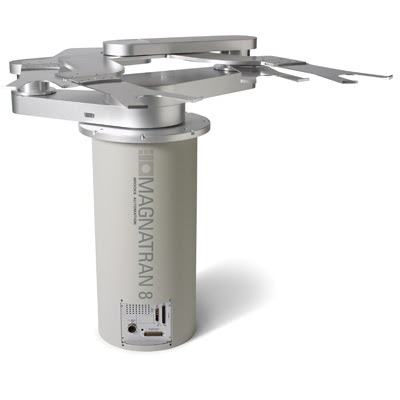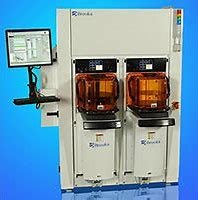Anna Monaghan - Brooks Automation
- The Rivers School

- Aug 19, 2021
- 3 min read
This summer, I was fortunate enough to intern in person at Brooks Automation in Chelmsford Massachusetts. The company has two divisions: Semiconductors and Life Sciences, and I worked with manufacturing engineers (MFEs) in the Semiconductors division. The Semiconductor division provides robots for companies that manufacture semiconductors such as microchips. These microchips are then used to make many of the machines that we use daily, such as cell phones and computers.
A Mag-8 Robot and an Atmospheric Systems Robot, the two I worked with most
On my first day, my first task was to learn how to log NCs (non-conformances, or non-conformant material). When any part of a robot wasn’t working properly, was damaged, or didn’t meet its specifications, it would be reported and then given to me and my partner, Sukriti. It was then our job to decide if the part should be scrapped, or if it should be shipped back to the supplier to be repaired and sent back to us. If it was being sent back to the supplier, we had to find out who sold the part. This information then went onto a form that also included things like the cost of each part, what was wrong with them, and the number of parts being rejected. Because of the number of robots being built and tested every day, and the number of parts in each one there were always quite a few NCs for us to do. One day, we did over 100 of them, and still had plenty for the next day!

Working through lots of boxes of NCs
In order to maintain low contamination levels and keep the robots as clean as possible, robots are built in cleanrooms. To enter a cleanroom, you have to “gown up,” and put on a suit, gloves, and special shoes. I was fortunate enough to be able to work in one of these cleanrooms on 3 separate occasions, once to assist with a build, once to witness the testing process for a robot, and once to do NCs for the Mag-8 robot.
In the process of suiting up to enter the cleanroom, and fully suited up and ready to work
The first time I worked in a cleanroom, I assisted an MFE with a first-time build. Because a robot with those particular specifications had never been built before, the process took much longer than usual. Hundreds of parts are used in each robot, and every one of them had to be carefully logged, with all of its measurements, specifications, and functions reported. To assist in the process, I went through the part list and made sure that everything was accounted for, adding things that were missing, and adjusting errors if needed.
The next time I went into a clean room, I got to witness the testing process for an Atmospheric Systems robot. To make sure that everything about the robot is sound and ready for shipment to the customer, an MFE needs to go through a set of tests that check everything from the calibration of the robot’s arms to its light switches. After a long two-day testing process, it was gratifying to be able to see the system carry out its final function!
The final time I worked in a cleanroom was to do NCs for a Mag-8 robot (shown above). The finishes and surfaces of many of its parts are delicate, so we went into the cleanroom to ensure that no outside contaminants would damage parts.
I am so grateful to have had this opportunity and to have learned so much in the process! Special thanks to Richie Mendes, Dave Lewandowski, and Mr. Schlenker for all of their help this summer.










Comments